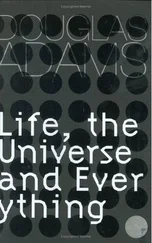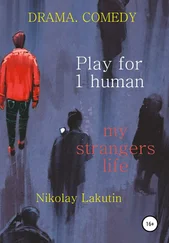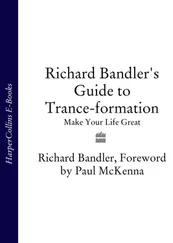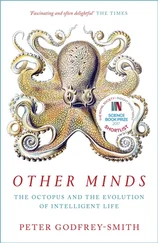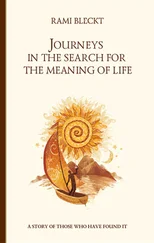1 Cover
2 Title Page
3 Copyright
4 Preface
5 1 Historical Perspectives: How the Search for Technosignatures Grew Out of the Cold War 1.1 Introduction 1.2 The Extraterrestrial Life Debate Gets Technical 1.3 Finding the 21-cm Hydrogen Line 1.4 The Role of the Space Race in Early CETI 1.5 Same Planet, Different Civilizations 1.6 Making Intelligent Life in the Universe 1.7 Conclusion: Returning to L References
6 2 Reading the Cosmos: What Our Science Tells Us About the Science of Another World 2.1 Introduction 2.2 The Why and How of Interstellar Communication 2.3 An Early Language 2.4 A Language Based on Science 2.5 Our Senses, Our Perceptions and Our Science 2.6 Conclusion References
7 3 The Impact of Discovering the First Technosignature 3.1 Introduction 3.2 Cultural Impact Based on Analogous Historical Events 3.3 Modeling the Impact Based on the Discovery’s Diffusion into Society 3.4 Multimodal Diffusion into Knowledge Systems of Complex Publics References
8 4 Searching for Extraterrestrial Intelligence by Locating Potential ET Communication Networks in Space 4.1 Introduction 4.2 Concepts 4.3 Case Study 4.4 Conclusions Acknowledgements References
9 5 Habitable Mini-Earths with Black Hole Cores 5.1 Introduction 5.2 Surface Comfort 5.3 Concept and Design 5.4 Surface Conditions and Size 5.5 Black Hole Core 5.6 Mass Boosting and Terraformation 5.7 Technosignatures 5.8 Conclusion Acknowledgement References
10 6 Technosignatures in Time-Series Photometry 6.1 Introduction 6.2 Types of Technosignatures 6.3 Axis of Merit Discussion for These Technosignatures 6.4 Methods References
11 7 Post-Detection Message Analysis and Comprehension 7.1 Categorizing an ET Signal 7.2 The Interstellar Communication Relay 7.3 The Processing Pipeline and Participants 7.4 Demodulation 7.5 Combining Pulse Width and Pulse Interval Modulation 7.6 Data Extraction 7.7 Classifying ETI Communication 7.8 Risks of Contact References and Recommended Reading
12 8 Statistical Issues in the Search for Technosignatures 8.1 Introduction 8.2 General Issues 8.3 Emission Processes 8.4 Bayesian Inference from Non-Detection and Detection References
13 9 Economics and Technosignatures: New Connections 9.1 The Different Faces of Economics 9.2 Economics in the Context of NASA Astrobiology Roadmap and the Drake Equation 9.3 Economics in the Context of Biosignatures vs. Technosignatures Research 9.4 Economic Methodology and Epistemology into Astrobiology References
14 Index
15 Also of Interest
16 Wiley End User License Agreement
1 Chapter 1 Figure 1.1 The flag of Earth, created in 1970 by James W. Cadle. Figure 1.2 Illustrations of Tesla and Marconi in an article titled “Hello Earth!... Figure 1.3 Gagarin waves from the car outside the headquarters of Amalgamated Un... Figure 1.4 ‘The Israeli python and the American barrel,’ B. Zhukov, Pravda Vosto... Figure 1.5 Excerpt from Intelligent Life in the Universe (1966). Sagan made cont...
2 Chapter 4Figure 4.1 A visualization of modular network analysis of 96 exoplanetary system...
3 Chapter 5Figure 5.1 Atmospheric surface conditions for various sizes of the planetary bod...
4 Chapter 6Figure 6.1 Figure 1b from [6.14]. Schematic illustration of how a fleet of orbit...Figure 6.2 Top panel of Figure 4 from [6.20]. Image of transiting geosynchronous...Figure 6.3 Adapted version of Figure 2 of [6.20]. Transits of an Earth analog or...Figure 6.4 Example illustrating the axes of merit representation for optical or ...
5 Chapter 7Figure 7.1 Flowchart of the message analysis pipeline, with participants and out...Figure 7.2 Sample plot of photons counted over time. Notice the spikes that rise...Figure 7.3 A plot of a signal that combines both pulse width and pulse interval ...Figure 7.4 Example of a planetary image embedded in a larger block of random dat...Figure 7.5 The Cat’s Eye nebula, imaged in red, green and blue color channels. T...Figure 7.6 A pure tone (sine wave) as would appear in a time domain graph (x-axi...Figure 7.7 A 16-bit binary representation of the signal plotted above, in unsign...Figure 7.8 An example of an English semantic network. Notice how each concept is...Figure 7.9 A river flowing with mountains in the background. Image credit: “The ...Figure 7.10 Example of a labeled image from the Voyager record which depicts the...
6 Chapter 8Figure 8.1 Schematic illustration of the causal constraint of Eq. (8.1). The ann...Figure 8.2 Posterior probability that  ≥1 (left) and
≥1 (left) and  ≥100 (right) resulting fro...
≥100 (right) resulting fro...
1 Cover
2 Table of Contents
3 Title Page
4 Copyright
5 Begin Reading
6 Index
7 End User License Agreement
1 v
2 ii
3 iii
4 iv
5 ix
6 x
7 xi
8 1
9 2
10 3
11 4
12 5
13 6
14 7
15 8
16 9
17 10
18 11
19 12
20 13
21 14
22 15
23 16
24 17
25 18
26 19
27 20
28 21
29 22
30 23
31 24
32 25
33 26
34 27
35 28
36 29
37 30
38 31
39 32
40 33
41 34
42 35
43 36
44 37
45 38
46 39
47 40
48 41
49 42
50 43
51 44
52 45
53 47
54 48
55 49
56 50
57 51
58 52
59 53
60 54
61 55
62 56
63 57
64 58
65 59
66 60
67 61
68 62
69 63
70 64
71 65
72 66
73 67
74 69
75 70
76 71
77 72
78 73
79 74
80 75
81 76
82 77
83 78
84 79
85 80
86 81
87 82
88 83
89 85
90 86
91 87
92 88
93 89
94 90
95 91
96 92
97 93
98 94
99 95
100 96
101 97
102 98
103 99
104 100
105 101
106 103
107 104
108 105
109 106
110 107
111 108
112 109
113 110
114 111
115 112
116 113
117 114
118 115
119 116
120 117
121 118
122 119
123 120
124 121
125 122
126 123
127 124
128 125
129 126
130 127
131 128
132 129
133 130
134 131
135 132
136 133
137 134
138 135
139 136
140 137
141 138
142 139
143 140
144 141
145 142
146 143
147 144
148 145
149 146
150 147
151 149
152 150
153 151
154 152
155 153
156 154
157 155
158 156
159 157
160 158
161 159
162 160
163 161
164 162
165 163
166 164
167 165
168 166
169 167
Scrivener Publishing
100 Cummings Center, Suite 541J
Beverly, MA 01915-6106
Astrobiology Perspectives on Life of the Universe
Series Editors: Richard Gordon and Joseph Seckbach
In his 1687 book Principia , Isaac Newton showed how a body launched atop a tall mountain parallel to the ground would circle the Earth. Many of us are old enough to have witnessed the realization of this dream in the launch of Sputnik in 1957. Since then our ability to enter, view and understand the Universe has increased dramatically. A great race is on to discover real extraterrestrial life, and to understand our origins, whether on Earth or elsewhere. We take part of the title for this new series of books from the pioneering thoughts of Svante Arrhenius, who reviewed this quest in his 1909 book The Life of the Universe as Conceived by Man from the Earliest Ages to the Present Time. The volumes in Astrobiology Perspectives on Life of the Universe will each delve into an aspect of this adventure, with chapters by those who are involved in it, as well as careful observers and assessors of our progress. Guest editors are invited from time to time, and all chapters are peer-reviewed.
Читать дальше
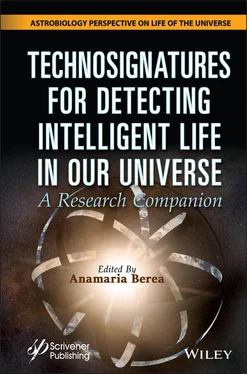
 ≥1 (left) and
≥1 (left) and 